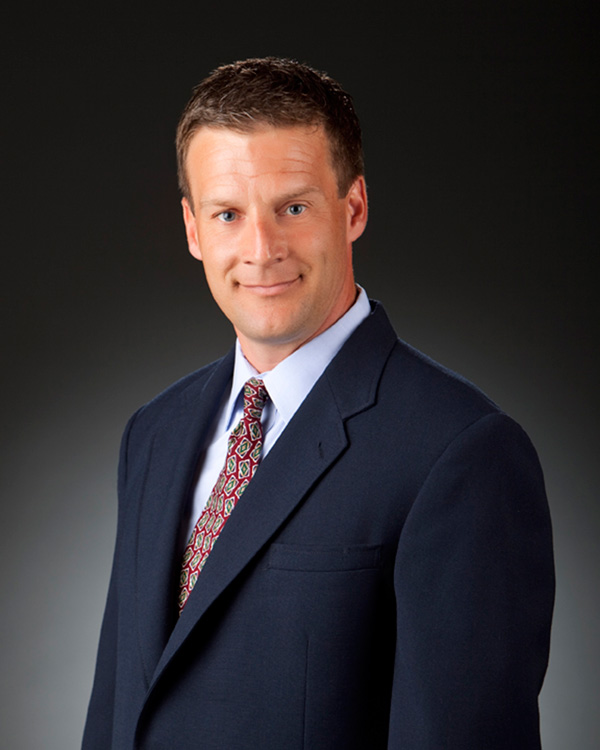One of my favorite parts of real estate investing involves the planning. How, at the beginning of a new year, can you “lock down” what it will take to ensure you meet your goals for the year? At the same time, I should acknowledge that most people consider this—planning around the unknowns of what you hope to achieve—to be the greatest risk of real estate investing. So what I want to accomplish here is to convince you that this process of planning your business to ensure and lock down your success for the coming year is really very simple.
I’m going to share with you what I do every year as a full-time real estate investor to ensure that 12 months from now, I will be looking back on yet another year where goals have been achieved, results have been realized, and I have met my objectives. This ability to plan your business year-in, year-out is a unique aspect of residential real estate investing, and this is exactly what I do. It centers on the concept, or principle, of beginning with the end in mind.
Tune out the naysayers.
If you are new to real estate investing—whether you are in the stage of “I haven’t begun yet, but I want to begin,” or “I just started as a part time real estate investor”—wherever you are, you are probably very well aware of the tone that pertains to real estate investing, that “it’s risky” and “it’s unknown.” You have probably heard this from family and friends: “How do you know you are going to make money?” or, “Do you realize that you can lose a ton of money?” Just that overall theme of risk.
Let’s talk about how to overcome and eliminate that. We do it through a process called “reverse engineering.” You reverse-engineer your success in order to define your goals and ensure that you get there successfully by the end of the year.
As you are sitting here in January—whether you have already started investing in real estate or you are getting ready to start—I encourage you to use this concept of reverse engineering to set your goals to make sure that you finish 2016 where you want to finish.
Here is how it works: You are basically designing your real estate investing business to deliver the income, or cash flow, or profit—whatever you want to call it—that creates the lifestyle or achieves the objectives that you are seeking for the year.
The approach is very simple.
First, determine your income goal for your real estate investing. This is probably the easiest step. No doubt, as a part-time real estate investor you already know that, “I want to make another $15,000 in 2016 on top of what I earn in my full-time career.” Maybe you want to use that $15,000 to buy a new car, or you want to take a great vacation for your anniversary. Perhaps you are starting save for your children’s college education. Or maybe you just have a goal of retiring some debt that has been lingering in your life. Whatever your goal is, determine how much you are trying to earn this year as a result of your real estate investing. That’s one number, and it’s a dollar figure.
Then, based on the type of investing that you are going to do, simply divide that income goal by the profit that you expect to generate from each house that you expect to buy. For instance, if you are investing in rental properties, you probably have learned that in your market you can purchase a property, rent it and earn a certain cash flow each month, which equals ultimately a year’s worth of income off that property. Whatever that number may be—whether it’s $1,000 or $10,000—understand what it is that you are going to able to generate in the form of cash flow (or income, or profit) off of one house.
Then the math is very elementary. You have your income goal for the year, you know what one house is going to earn you. Simply divide that income goal by the earnings you expect that one house to generate. Then you’re going to know, “OK, that is the number of homes that I need to buy this year as a real estate investor” in order to achieve that income goal, and retire that debt, or take that vacation, or save for that college education, or whatever you are seeking to achieve.
Take the example of a rental investor.
Many part-time real estate investors are rental investors, meaning that they buy and hold residential real estate as rental properties in addition to their full-time careers, and that is how they accumulate that incremental income well outside of their full-time jobs.
Let’s say you are one of those rental estate investors, and your goal in 2016 is to earn $10,000 through your real estate investing outside of your full-time earnings. So let’s use reverse engineering to figure out exactly what it will take for you to earn that $10,000 this year verses simply heading into 2016 blindly, with your fingers crossed and hoping that you achieve that objective. By using reverse engineering, we can help guarantee that you’ll achieve it.
If your goal is to achieve $10,000 this year in incremental cash flow or income from your rental real estate investing, that’s $833 a month. Let’s say you’re an educated part-time real estate investor and know that in your market you can buy a piece of single-family rental real estate that will generate $300 a month cash flow. You know that, because you know what you are going to have to pay for the house, and you know what you are going to have to pay in terms of principal, interest, taxes, insurance, maintenance and property management. Once you deduct those figures from your monthly rent, you know that you can confidently plan on cash-flowing—or earning, or profiting—$300 a month or $3,600 a year from one house.
So using reverse engineering, do the math: $10,000 divided by $3,600 means that you need to buy 2.78 houses this year, or for practical reasons, your goal is three houses. You have now taken the guesswork out of “what I need to do” in 2016 to achieve your goals as a part-time real estate investor. If you successfully identify, purchase and rent three houses this year, you are going to earn that $10,000, which is your goal or objective. You have basically have backed into—or reversed-engineered—and determined exactly what you need to do in order to achieve your objective.
There is no guesswork, and much less risk that December 2016 will roll around and you will be frustrated, upset or disenchanted by real estate investing due to not having achieved your goal, because maybe you only bought one house, and you didn’t make that $10,000 that you wanted so you could retire that credit card debt, or buy that new car, or pay off some other debt that you may have.
This also applies to you if you are a rehabber.
Let’s say you are a part-time investor who is a rehabber—you buy houses, you fix them up, and resell them. It’s the same principle: you can reverse-engineer your goal, and this one may be a lot simpler.
Let’s say you want to make $20,000 in 2016 off your rehabbing investment. You know that you can probably make $20,000 off a single rehab property in your market. In this example, the math is overly simplified: you have a goal or objective of $20,000, divided by the amount ($20,000) you know you can make off of a single rehab project. $20,000 divided by $20,000 is one. That means that you need to purchase one house in 2016 to meet your income objective as a rehabber, or a fix-and-flipper, or whatever you want to call yourself, if that’s the type of investing that you do.
I reiterate, this is exactly what I do when I plan my business as a full-time real estate investor. As I alluded to earlier, it is one of the aspects that I love the most about real estate investing, because despite the belief that it is highly risky and it is highly speculative, when you reverse-engineer and take the time to truly understand your business, you can remove so many of the unknowns, and you can set yourself down a path to ensure your success.
It’s especially useful for a full-time investor.
It becomes much more complex when you are doing more scale as a full-time real estate investor, which many of you may do someday. When you are looking at, “I am going to buy so many rentals this year and they are going to earn this much” and, “I am also going to do so many wholesale deals,” that is a different earning. Or, “I’m also going to do some assignments,” which may be a different earning. Finally, “I’m also going to do some rehabs.” It’s a lot more houses, and that’s a lot more thinking about exit strategy, but as you pull it all together, you can have a very high volume and very profitable business, but yet, very defined and very specific goals, so that at the end of the year, you’ll achieve exactly what you’re setting out to achieve. You’ll know that this year “I need to buy four rental properties, I need to do six wholesale deals, I need to do 11 assignments and I need to do four rehab projects.” That is very specific, very defined, and it eliminates a lot of risk and all the speculation.
What you’ll find, too, is that when you do understand your business and use reverse engineering in your planning, it enables you to unlock so many additional unknowns in your business. For instance, you’ll know how much capital you need because you now know how many homes you’re going to buy. If you are advertising on your own to get leads in order to buy homes, you are also going to be able to reverse engineer, or back into your advertising needs. So it unlocks the ability to control so many things that you may think that are uncontrollable.
It’s an approach I use every year in December, prior to the new year beginning, and it’s an approach that has continued to serve me well, year after year.
The key is planning.
It may be an old adage or tired adage, but it’s true: planning is a must. I cannot stress enough that if you do not know where you are going, especially in real estate investing, not only will you not get there, but you will probably never leave and make it to whatever destination or whatever objective it is you are seeking in your investment.
But real estate investing is one of those businesses where you can eliminate those unknowns and ensure your success at the end of the year by using reverse engineering. It’s also going to prepare you to better overcome the many obstacles you will confront that you can’t control. When you have got your business buttoned up and planned, and you are controlling as many “controllables” as possible, you’ll be ready to overcome the risks and the unknowns that you’re probably going to encounter as a part-time real estate investor.
Listen to Kevin’s podcast here:
http://www.blogtalkradio.com/kevinguz/2016/01/15/locking-down-real-estate-investment-success-in-2016






















0 Comments